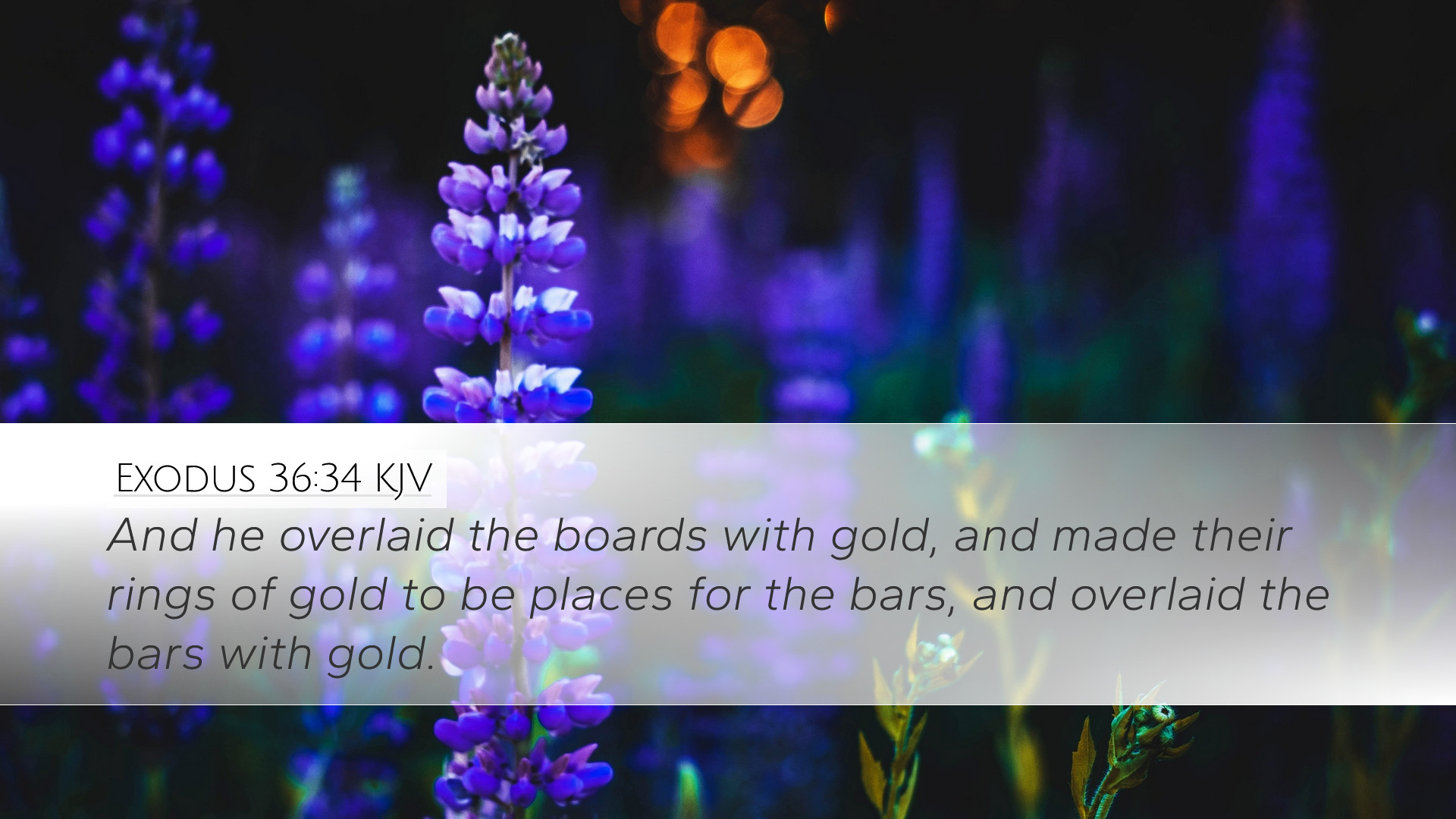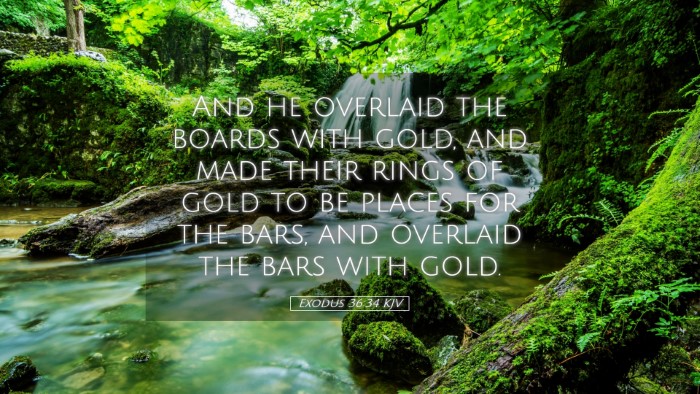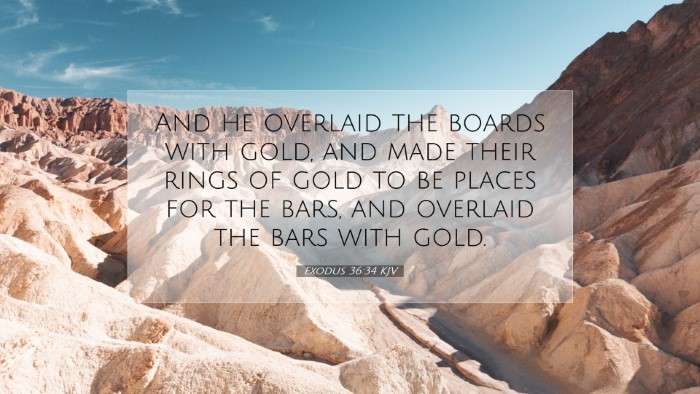Commentary on Exodus 36:34
Verse: Exodus 36:34 - "And he made the veil of blue, and purple, and scarlet, and fine twisted linen: with cherubim made he it of the work of the cunning workman."
Introduction
This verse is integral to understanding the construction of the Tabernacle, a central element in the worship of God by the Israelites. The meticulous description and the intricate craftsmanship involved in creating the veil serve both aesthetic and symbolic purposes.
Commentators such as Matthew Henry, Albert Barnes, and Adam Clarke provide profound insights into the theological significance, symbolism, historical context, and practical applications of this scripture.
The Significance of the Veil
The veil in the Tabernacle served as a divine barrier, separating the Holy of Holies, where God's presence dwelled, from the outer sanctuary accessible to priests and the people.
- Representation of Separation: The veil symbolizes the separation between a holy God and sinful humanity. As noted by Matthew Henry, it reflects the necessity of mediation and the sanctity of the presence of God.
- Types of Christ: Albert Barnes elaborates on how the veil typifies Christ, who is our mediator. Just as the veil separated the common from the sacred, Jesus Christ's sacrifice provides access to God.
- Cultic Function: Adam Clarke stresses the veil's role within worship, emphasizing how it facilitated the function of the priests in performing rituals while maintaining reverence for God's holiness.
Materials and Craftsmanship
The specific materials—blue, purple, and scarlet—including fine twisted linen, are rich in symbolism.
- Colors of Significance: Each color reflects different attributes of Christ and serves as a reminder of royalty, divinity, and sacrifice. The blue symbolizes heavenly origin, purple signifies kingship, and scarlet represents the atoning blood of Christ.
- Craftsmanship: The mention of "cunning workman" underscores the skill and devotion required in creating the Tabernacle's elements. As noted by Clarke, this highlights the importance of human agency in fulfilling divine commands.
Theological Implications
Theologically, Exodus 36:34 touches on various doctrines including the atonement, the nature of God, and the priesthood.
- Atonement: The veil emphasizes the need for atonement and the understanding that access to God is only possible through sacrifice, a theme common in both the Old and New Testaments.
- God's Holiness: The separation inherent in the veil is a stark reminder of God's holiness as depicted throughout Scripture. The weight of sin necessitates a mediator, a point Henry emphasizes when discussing God's nature.
- The Role of the Priesthood: The priests, who would interact with the veil, represent Jesus as our High Priest. Barnes articulates how Christ fulfills this role, allowing believers access to God in the New Covenant.
Practical Applications
For pastors, theologians, and scholars, this verse has significant implications for faith and practice.
- Understanding Worship: The careful examination of the mystical aspects of worship reaffirm the importance of approaching God with reverence and awe, recognizing our need for a mediator.
- Spiritual Symbolism: The materials used in the veil can inspire believers to reflect on the colorful tapestry of salvation history, emphasizing that everything in Scripture points to Jesus Christ.
- Reflection on Access to God: In the light of Christ's work, believers can find joy in the truth that the veil has been torn, as narrated in the Gospels, allowing unrestricted access to God’s presence.
Conclusion
Exodus 36:34 provides a rich theological framework that connects Old Testament worship practices with New Testament revelations about Christ. The craftsmanship, materials, and symbolic meanings woven into the veil serve as a reminder of God’s holiness, the necessity of atonement, and the role of Christ as the ultimate mediator.
This commentary invites further reflection on the beauty and complexity of God's revelation through the Tabernacle and encourages ongoing study of the interplay between the Old and New Testaments.


